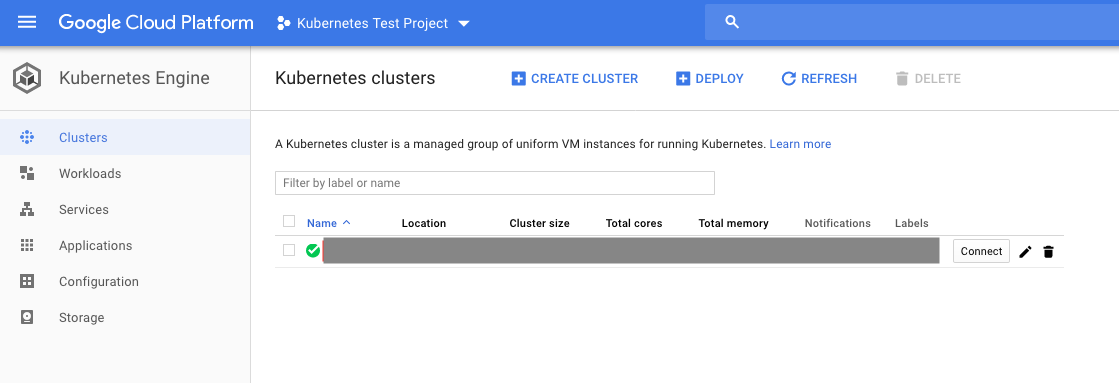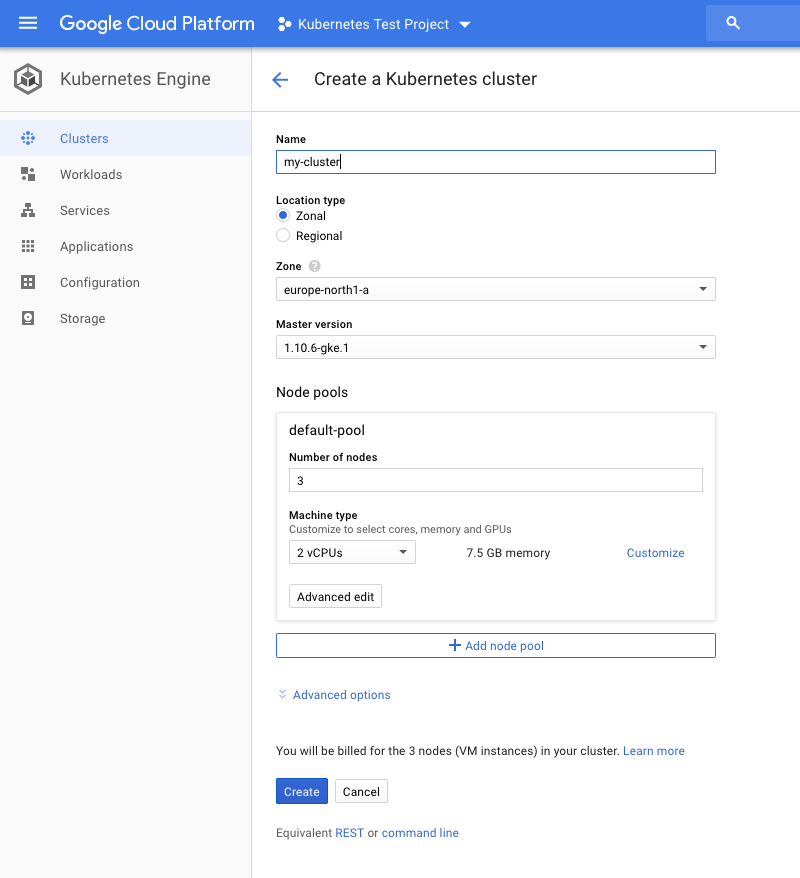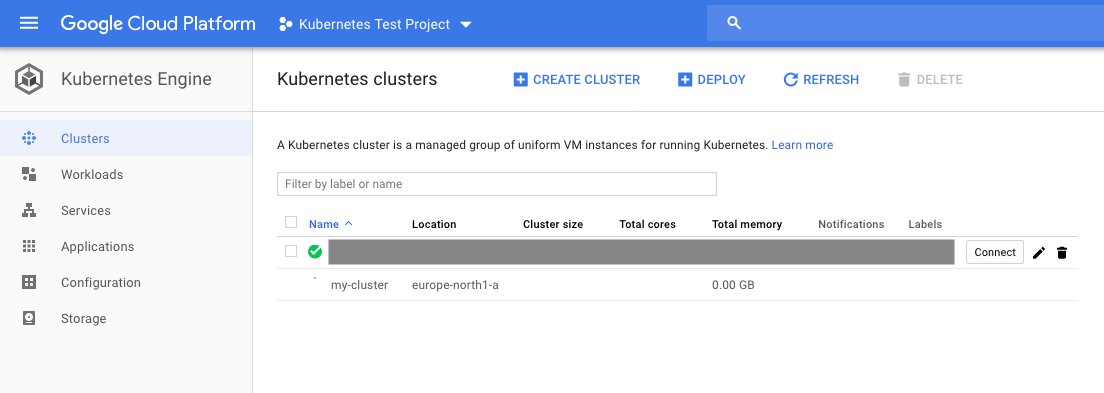ArangoDB v3.4 reached End of Life (EOL) and is no longer supported.
This documentation is outdated. Please see the most recent version here: Latest Docs
Start ArangoDB on Google Kubernetes Engine (GKE)
In this guide you’ll learn how to run ArangoDB on Google Kubernetes Engine (GKE).
Create a Kubernetes cluster
In order to run ArangoDB on GKE you first need to create a Kubernetes cluster.
To do so, go to the GKE console. You’ll find a list of existing clusters (initially empty).

Click on CREATE CLUSTER.
In the form that follows, enter information as seen in the screenshot below.

We have successfully ran clusters with 4 1 vCPU nodes or 3 2 vCPU nodes.
Smaller node configurations will likely lead to unschedulable Pods.
Once you click Create, you’ll return to the list of clusters and your
new cluster will be listed there.

It will take a few minutes for the cluster to be created.
Once you’re cluster is ready, a Connect button will appear in the list.

Getting access to your Kubernetes cluster
Once your cluster is ready you must get access to it.
The standard Connect button provided by GKE will give you access with only limited
permissions. Since the Kubernetes operator also requires some cluster wide
permissions, you need “administrator” permissions.
To get these permissions, do the following.
Click on Connect next to your cluster.
The following popup will appear.

Click on Run in Cloud Shell.
It will take some time to launch a shell (in your browser).
Once ready, run the gcloud command that is already prepare in your commandline.
You should now be able to access your cluster using kubectl.
To verify try a command like:
kubectl get pods --all-namespaces
Installing kube-arangodb
You can now install the ArangoDB Kubernetes operator in your Kubernetes cluster on GKE.
To do so, follow the Installing kube-arangodb instructions.
Deploying your first ArangoDB database
Once the ArangoDB Kubernetes operator has been installed and its Pods are in the Ready
state, you can launch your first ArangoDB deployment in your Kubernetes cluster
on GKE.
To do so, follow the Deploying your first ArangoDB database instructions.
Note that GKE supports Services of type LoadBalancer.

